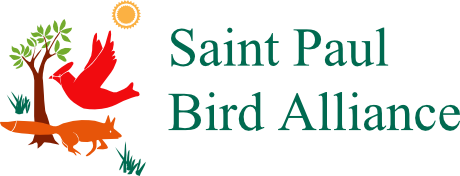8 Ways to Help Birds
A brand-new year lies ahead, full of possibilities and opportunities. Here are some suggestions for ways to help the birds (and other flying things) that bring such beauty and joy to our lives.
This author has not written his bio yet.
But we are proud to say that simpledesigns contributed 157 entries already.
A brand-new year lies ahead, full of possibilities and opportunities. Here are some suggestions for ways to help the birds (and other flying things) that bring such beauty and joy to our lives.
Rachel Carson and the Age of Environmentalism by William Souder (General Meeting 12/12/13) | Perils to Frogs and Wetlands by Dr. Judy Helgen (General Meeting 01/09/14) | St. Paul Chapter’s Annual Fund Drive | Christmas Bird Count – December 14th, 2013. (note: date is incorrect in printed Cardinal) | Call for SPAS Board Nominees
These long-billed, active little birds zigzag all over a tree in search of a meal, sounding like tiny tin horns as they stay in contact with their kind.
We can take steps to assist migrants and even the odds for backyard birds who battle the elements during our long, cold winters.
October Member Meeting: ‘Bison on the Open Prairies’ by Jon Grinnell – October 10th | November Member Meeting: ‘Grasshopper Sparrows in Decline’ by Lisa Harn – November 14th | Education Committee Volunteers on the Big River Journey | BOOK REVIEW “The Birdman of Lauderdale” by Clay Christensen
Songbirds and shorebirds, geese and ducks and raptors spent the summer raising their young, but now it’s time to head for warmer zones, where food is more abundant.
Member Meeting Agenda for 2013-14 | Audubon & the Art of Birds, Sept 12th by Don Luce | The Education Committee’s Summer Project: Como Bird Camp! | SPAS Conservation Committee: All About Saving Birds | On The Trail Again… | Local Resources
Remember that Coasters tune with the refrain: “He wears a red bandana, plays a blues pianna, in a honky-tonk, down in Mexico?” Well, who’s to say the rock and roll group’s song doesn’t also refer to one of the most beautiful birds in backyard and woodlot—at least until you get to the “pianna” part?
This little songster is heard more often than seen, but out in the sunlight on a summer’s day they’re among the most spectacular birds on the continent.
One of the most endearing thing about birds is how much of their lives are lived on view, out in the open. We watch them drinking and bathing, foraging for food and eating it, resting on perches and even copulating. We can observe nearly every aspect of avian life—except for the most important of all, their lives as parents. That’s almost always been hidden, tucked away inside a cup nest back in a shrub or within a tree cavity. Until now.
Saint Paul Bird Alliance
P.O. Box 7275
St. Paul, MN 55107
Saint Paul Bird Alliance is a chapter of the National Audubon Society, Inc.

